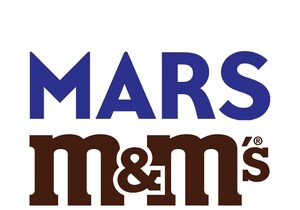- Mars Also Made Significant Strides to Increase Representation of People of Color -
MCLEAN, Va., June 21, 2023 /PRNewswire/ -- Today Mars introduced results from research commissioned with the Geena Davis Institute on Gender in Media to assess representation of gender, race, identity, disability and age (60+) in the company's advertisements that aired in 2022 worldwide. Mars began assessing representation of their advertising with the Geena Davis Institute on Gender in the Media five years ago.
For the first time, Mars ads have reached gender parity – with female characters comprising 49.9% of all people shown across the company's ads. This is a 51% increase in female character representation since the first assessment. Further, people of color comprise 63% of all people featured in Mars ads, which is a 117% increase since 2018. However, the research did identify areas for improvement in the representation of identity (1.6%), disability (0.6%) and age (2%).
"In the world we want tomorrow, society is inclusive, so it's critical our award-winning advertising reflects and celebrates the diversity of the audiences who enjoy them and our products around the world," said Andrew Clarke, Global President, Mars Wrigley "Mars has previously reported on gender diversity, but in the spirit of transparency and accountability, we've broadened the scope of our reports to also include racial diversity and LGBTQIA+, Disability and Age onscreen representation. We're incredibly proud of the advancements we've made in terms of gender and race representation, but the truth is, we still have work to do to meet our vision of full representation balance in our advertising."
In addition to looking at representation, the research evaluated character portrayals in activities such as shopping, driving, cleaning, cooking, working, socializing, eating/drinking and exercising. This latest report indicated very few instances of stereotyping and parity on both gender and race for situations such as who was speaking or positions of leadership. For example, in 2018, female characters were 5x more likely to be shown doing the cooking in Mars Food ads, whereas in 2022, male characters were shown cooking more often than female characters (55% compared to 29.2%).
The research leveraged the Geena Davis Inclusion Quotient (GD-IQ), a groundbreaking machine learning tool that also incorporates the University of Southern California Signal Analysis, Interpretation Laboratory's (SAIL) audio-visual processing technologies and human expert coding. The team analyzed more than 974 people featured in 413 Mars advertisements across the company's confectionery, petcare and food businesses.
"We're proud of our long-term partnership with Mars and commend them for the progress they've made to enhance representation balance in their advertising," said Madeline Di Nonno, CEO, Geena Davis Institute on Gender in the Media. "We also hope Mars' transparency with these findings will also encourage the larger industry to prioritize the equitable inclusion and representation."
For more information about the findings, visit www.mars.com.
SOURCE Mars, Incorporated

WANT YOUR COMPANY'S NEWS FEATURED ON PRNEWSWIRE.COM?
Newsrooms &
Influencers
Digital Media
Outlets
Journalists
Opted In






Share this article